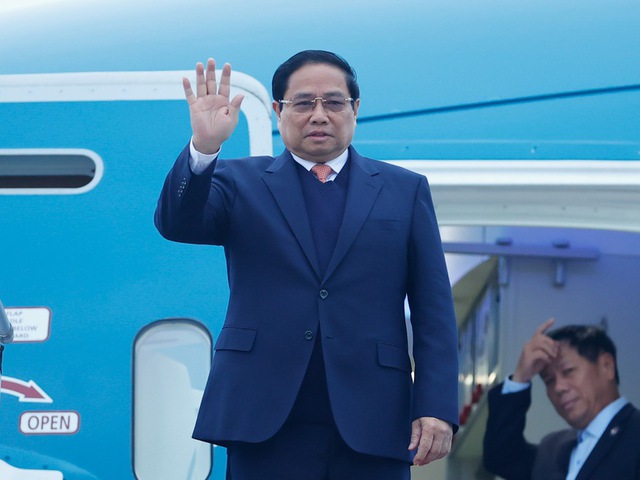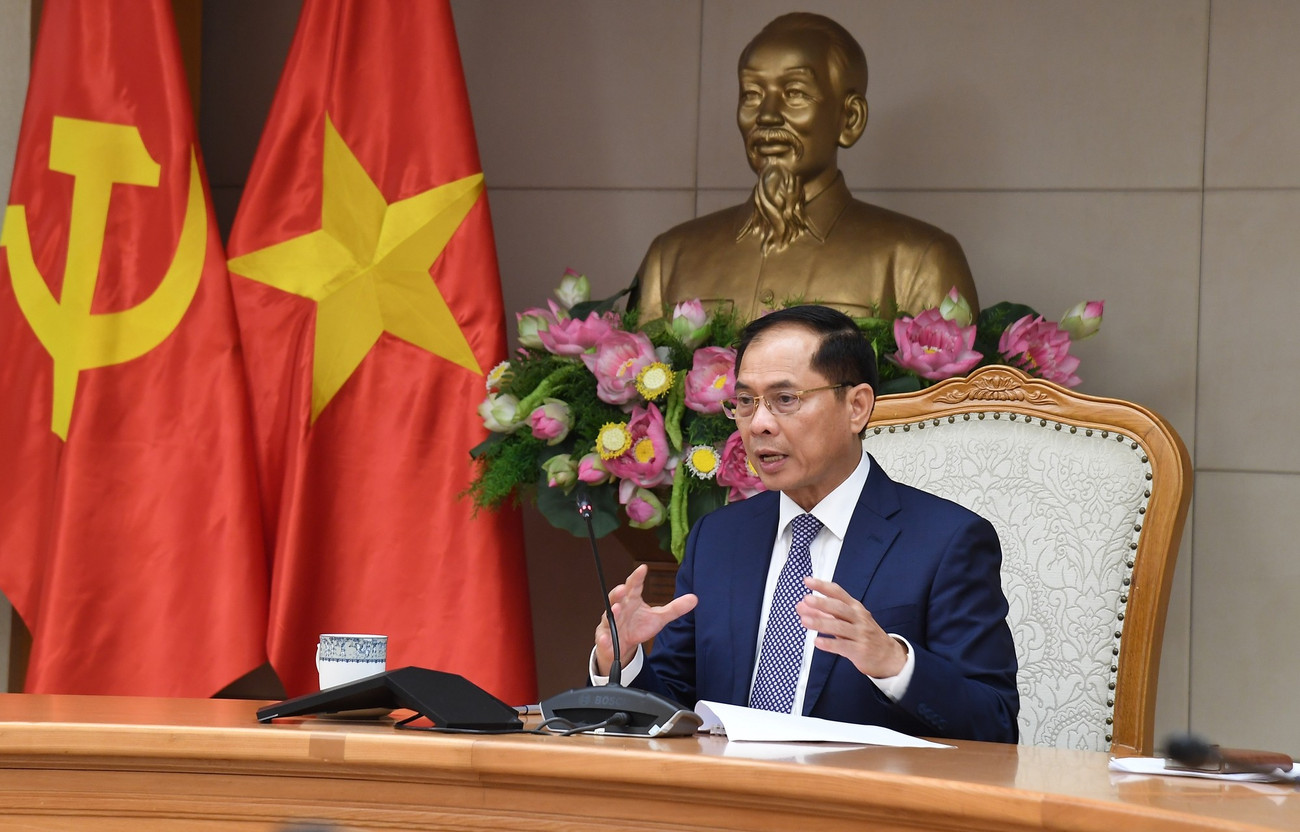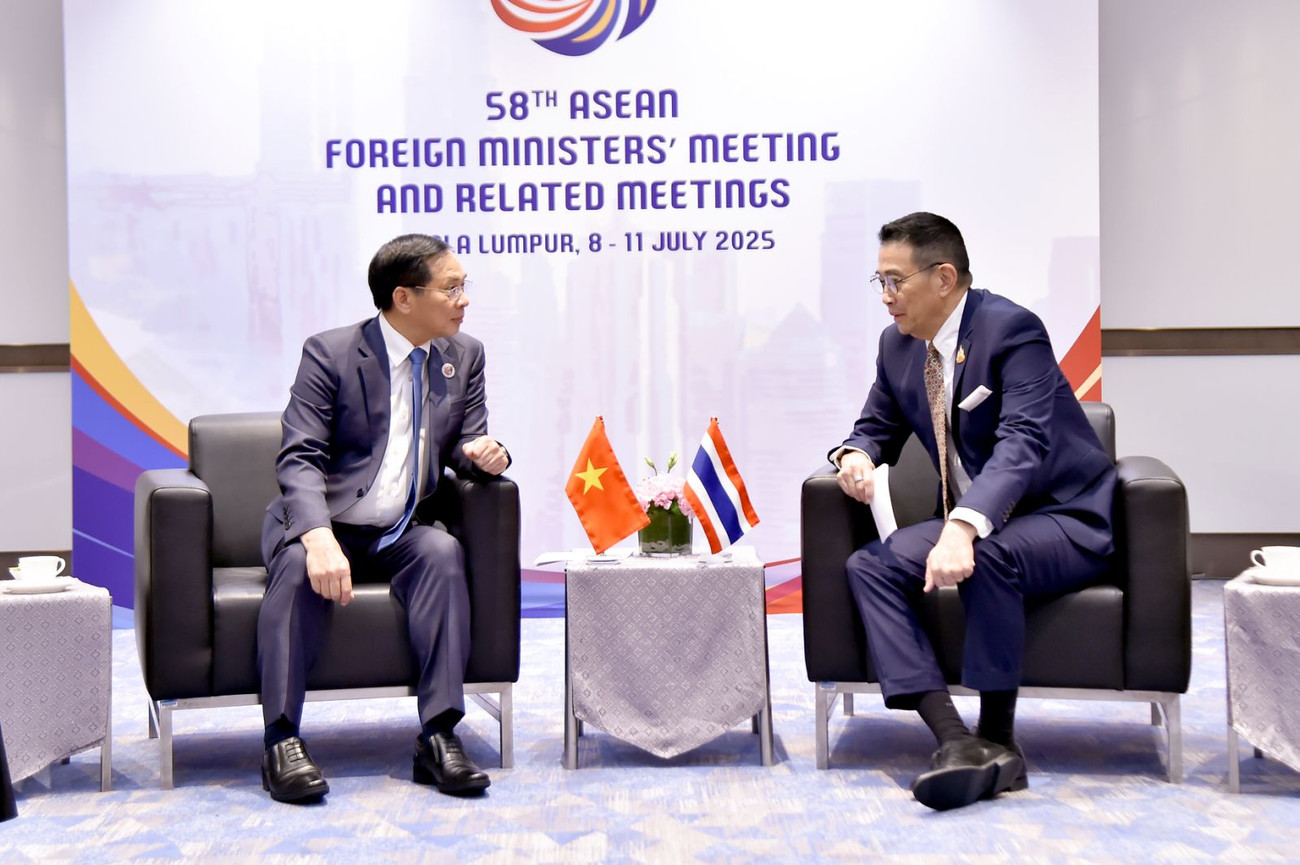MOIT VIETNAM | Vietnam and Laos Prime Ministers Co-Chair Landmark 2025 Investment Cooperation Conference to Advance Shared Growth and Prosperity
/ News / Activities
Vietnam and Laos Prime Ministers Co-Chair Landmark 2025 Investment Cooperation Conference to Advance Shared Growth and Prosperity
On January 9, 2025, in the capital of Laos, Prime Minister of Vietnam Phạm Minh Chính and Prime Minister of the Lao People’s Democratic Republic Sonexay Siphandone jointly chaired the Vietnam–Laos Investment Cooperation Conference 2025. The gathering was held within the framework of the 47th Meeting of the Vietnam–Laos Intergovernmental Committee on Bilateral Cooperation, reflecting both governments’ recognition that economic collaboration must continue to serve as one of the central pillars of their special relationship.
The event was organized by the Ministries of Planning and Investment of both nations under the guiding theme “Promoting Joint Development for Sustainability and Prosperity.” Far more than a symbolic occasion, the conference was designed as a platform for dialogue between governments and the private sector. It allowed both sides to review achievements from 2024, discuss challenges and opportunities for 2025, and engage directly with businesses that play a central role in translating political will into tangible economic results.
.jpg)
Setting the Stage for a New Chapter
Prime Minister Phạm Minh Chính, in his keynote address, laid out the broader context within which Vietnam and Laos must pursue their economic cooperation. He explained that the current international environment is characterized by increasing globalization, deeper regional integration, complex multipolar political dynamics, growing cultural and economic diversity, and an accelerating wave of digital transformation. These global shifts, he stressed, are reshaping the nature of competition and cooperation, requiring countries not to turn inward but to seek out deeper partnerships that safeguard national interests while also generating shared prosperity.
In this context, the Prime Minister reaffirmed the exceptional bond between Vietnam and Laos, a relationship that he described as unlike any other. Drawing on vivid imagery rooted in the history of both nations, he characterized it as one of “sharing rice and splitting vegetables” and “standing shoulder to shoulder along the Trường Sơn range.” This bond, he continued, is not solely political or economic but profoundly human, cultivated “from heart to heart.” For that reason, he argued, it requires both countries to treat cooperation not merely as a matter of convenience, but as a sacred responsibility inherited from previous generations who sacrificed for the independence and freedom of their peoples.
Prime Minister Chính called on businesses to internalize this principle in their operations, reminding them that “helping our friends is helping ourselves.” He urged enterprises from both sides to commit to cooperation based on listening, understanding, and mutual support, noting that joint economic success is not simply about growth figures but also about shared pride, mutual resilience, and the honoring of past sacrifices.
Despite the many advantages that Vietnam and Laos enjoy—including geographic proximity, long-standing cultural ties, and enduring people-to-people friendship—the Prime Minister acknowledged that their economic cooperation has yet to achieve its full potential. He identified three key challenges that must be addressed if the partnership is to reach a new level.
The first is a lack of strong determination and follow-through, even when opportunities have already been clearly recognized. The second lies in institutional and policy bottlenecks that slow down business activity and discourage cross-border investment. The third challenge is underdeveloped infrastructure, particularly in transport and logistics, which prevents the full realization of both countries’ comparative advantages.
To overcome these hurdles, Prime Minister Chính stressed the need for both governments to act with “high determination, great effort, clear responsibilities, and decisive timelines.” He called for a comprehensive program of institutional reform, coupled with sustained investment in both “soft” and “hard” infrastructure. In particular, he singled out transportation connectivity as a top priority, urging both sides to accelerate the development of Vũng Áng Port, create better-integrated supply chains, ease the flow of input materials, and expand access to cross-border markets.
The Vietnamese leader also emphasized that while removing bottlenecks is essential, it is equally important to seize new opportunities by embracing innovation. He called for ministries and agencies to cut unnecessary administrative procedures, delegate more authority to localities, and actively reduce business costs in order to create a more dynamic and competitive investment environment.
Looking to the future, he underlined that economic development can no longer rely solely on traditional drivers such as natural resource exploitation or low-cost labor. Instead, both Vietnam and Laos must prepare to renew these drivers while simultaneously cultivating new sources of growth. Among these, he identified the digital economy, the green economy, and the application of advanced technologies such as the Internet of Things, artificial intelligence, and renewable energy solutions.
“Time, intellect, and decisive action are what create success,” Prime Minister Chính declared, urging entrepreneurs to approach investment not only as a financial decision but also as a contribution of their minds, creativity, and hearts. He stressed that “Investing in Laos is investing in Vietnam, and investing in Vietnam is investing in Laos,” making clear that economic cooperation is more than an exchange of capital—it is an act of trust and a reaffirmation of solidarity between two nations bound by history.
In his own remarks, Prime Minister Sonexay Siphandone strongly endorsed this vision and pledged that Laos would work closely with Vietnam to dismantle barriers and accelerate priority projects. He emphasized that key initiatives such as road and railway construction, the expansion of Vũng Áng Port, and the strengthening of agricultural supply chains are not only national priorities but also essential for deepening bilateral economic ties.
.jpg)
Prime Minister Sonexay expressed confidence that Vietnamese enterprises would continue to invest in Laos, particularly in areas where Laos holds competitive advantages such as energy, mining, and agriculture. At the same time, he encouraged Lao businesses to explore opportunities in Vietnam, noting that cross-investment is a powerful way to leverage each country’s strengths for mutual benefit. By doing so, he argued, both nations can ensure that economic growth translates into higher living standards, stronger resilience, and greater prosperity for their peoples.
Beyond political commitments, the conference also delivered tangible outcomes. A total of 13 investment certificates and cooperation agreements were awarded to enterprises from both countries, demonstrating the practical value of the forum.
On the Vietnamese side, three enterprises received adjustments to their overseas investment registration certificates for projects in Laos, signaling a commitment to expanding and upgrading existing ventures. On the Lao side, four investment licenses, contracts, and certificates were granted to Vietnamese enterprises operating in the country.
In addition, six new cooperation agreements were signed between businesses from both nations, spanning a wide range of sectors including aviation, finance, energy, agriculture, and human resource training. These agreements highlight not only the diversity of bilateral cooperation but also its depth, as both sides work to translate political trust into projects with concrete economic and social benefits.
Building a Shared Future
In their concluding statements, both Prime Ministers emphasized that the Vietnam–Laos relationship is not merely a diplomatic arrangement but a rare and strategic treasure forged through history and sacrifice. They agreed that the responsibility of nurturing this relationship lies not only with governments but also with local authorities, the business community, and ordinary citizens who continue to build bonds across borders.
.jpg)
Looking ahead, the two leaders reaffirmed their shared vision of mutual trust, strategic alignment, and the spirit of being “forever loyal and eternally sustainable.” They expressed confidence that with determination and creativity, Vietnam and Laos can chart a common path toward sustainable growth and prosperity, a path that honors the struggles of the past while embracing the opportunities of the present and future.
As the conference came to a close, the sense was clear: the Vietnam–Laos partnership is entering a new chapter—one defined not only by political solidarity but also by economic dynamism, innovation, and a shared commitment to building a better life for the people of both nations.
-
/ News / Activities
Prime Minister Pham Minh Chinh’s Strategic Visit to Laos Marks New Chapter in Bilateral Relations
Prime Minister Pham Minh Chinh’s official visit to the Lao People’s Democratic Republic and his co-chairmanship of the 47th meeting of the Vietnam–...
-
/ News
Deepening Cooperation, Strengthening Regional Unity
On the afternoon of July 28, 2025, at the Government Headquarters in Hanoi, Deputy Prime Minister and Minister of Foreign Affairs of Vietnam, Mr. B...
-
/ News / Activities
Vietnam and Laos Accelerate Toward Deeper Regional Integration and Unprecedented Trade Growth
In an era where regional connectivity and economic resilience are critical pillars for national development, Vietnam and Laos are emerging as a mod...





